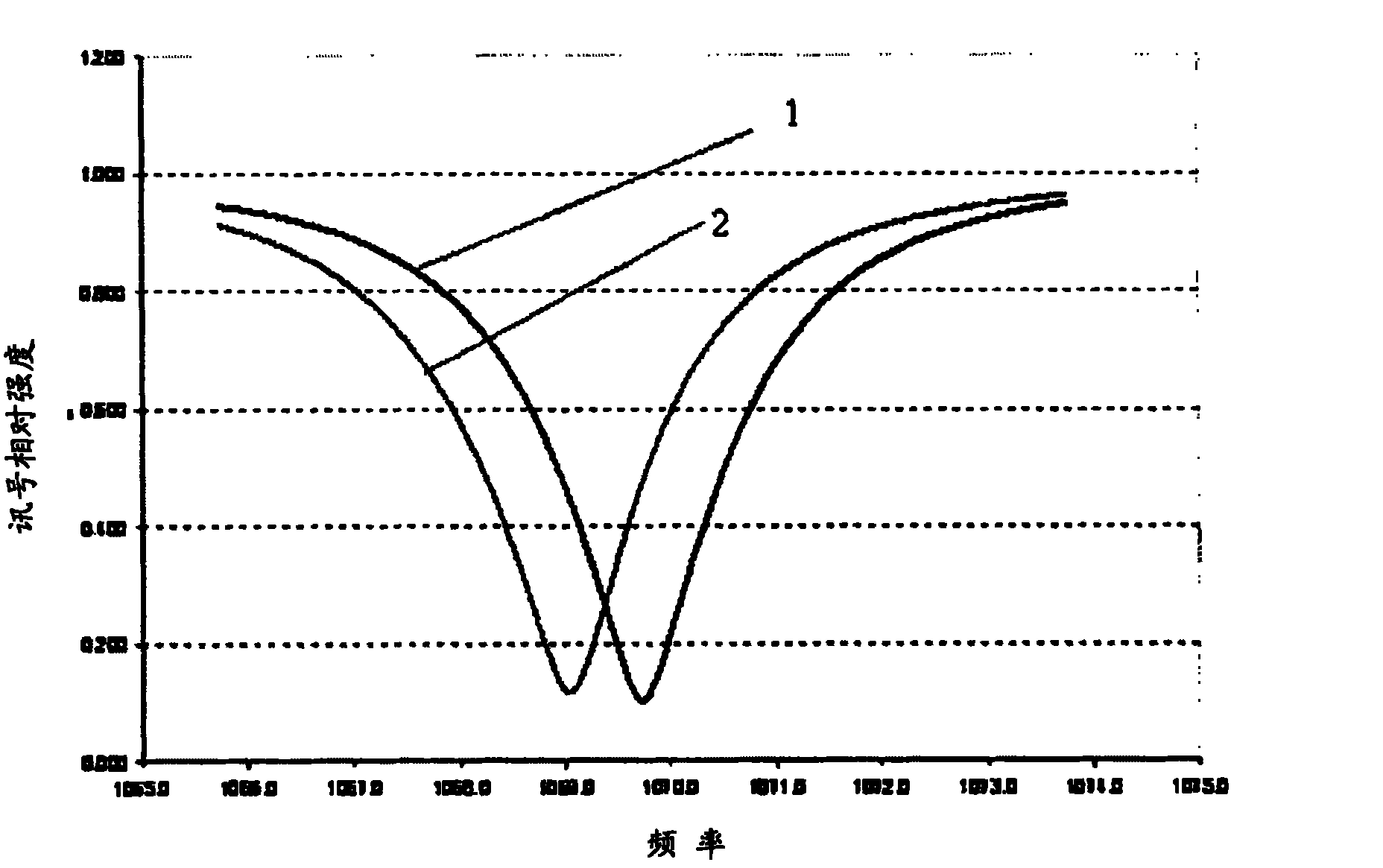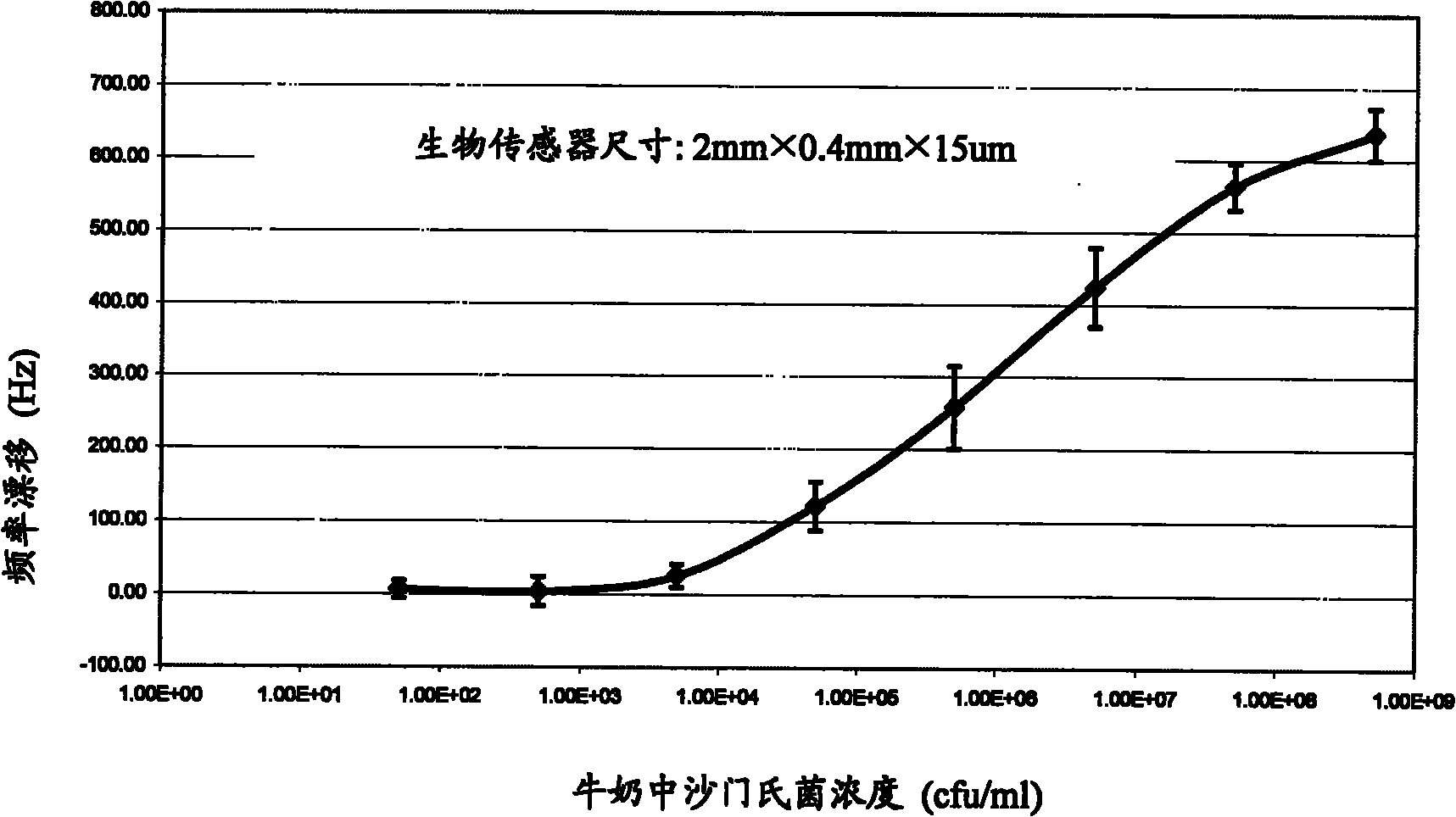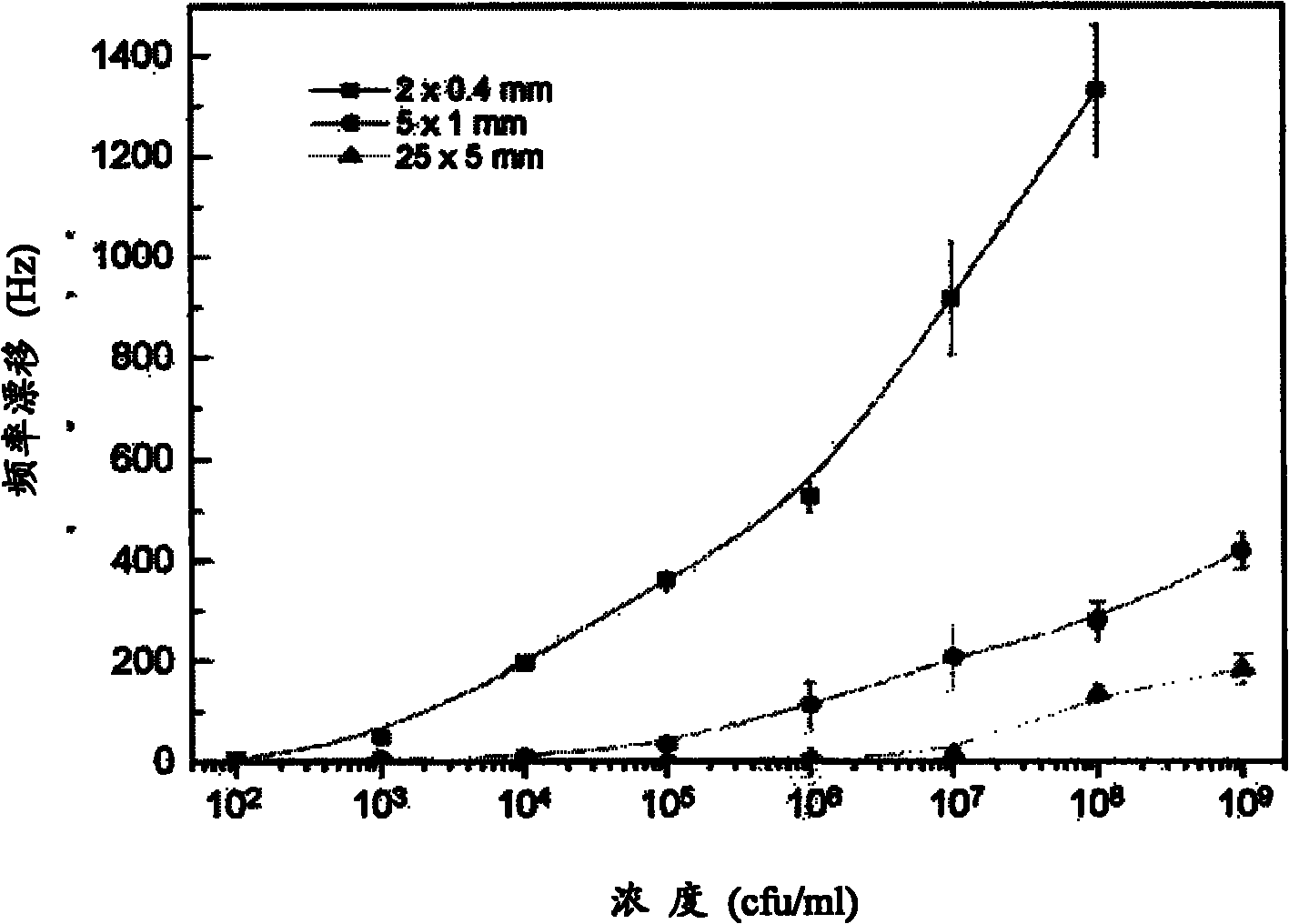Method for improving sensitivity of magnetostrictive material biosensor
A magnetostrictive material and biosensor technology, applied in the field of biosensors, can solve the problems of many testing steps, long detection time, inability to realize on-site and timely detection of Salmonella, etc.
- Summary
- Abstract
- Description
- Claims
- Application Information
AI Technical Summary
Problems solved by technology
Method used
Image
Examples
Embodiment 1
[0022] Embodiment 1 The size is 2mm×0.4mm×15um, and the magnetostrictive biosensor with immobilized antibody is 1×10 9 The resonance frequency shift produced after the Salmonella solution of CFU / ml is 691Hz ( figure 1 );
Embodiment 2
[0023] Example 2 The size is 5mm×1mm×15um, and the magnetostrictive biosensor with immobilized antibody is 1×10 9 The resonance frequency shift produced after the Salmonella solution of CFU / ml is 421Hz ( image 3 );
Embodiment 3
[0024] Example 3 The size is 25mm×5mm×15um, and the magnetostrictive biosensor with immobilized antibody is 1×10 9 The resonance frequency shift produced after the Salmonella solution of CFU / ml is 189Hz ( image 3 ).
PUM
 Login to View More
Login to View More Abstract
Description
Claims
Application Information
 Login to View More
Login to View More - R&D
- Intellectual Property
- Life Sciences
- Materials
- Tech Scout
- Unparalleled Data Quality
- Higher Quality Content
- 60% Fewer Hallucinations
Browse by: Latest US Patents, China's latest patents, Technical Efficacy Thesaurus, Application Domain, Technology Topic, Popular Technical Reports.
© 2025 PatSnap. All rights reserved.Legal|Privacy policy|Modern Slavery Act Transparency Statement|Sitemap|About US| Contact US: help@patsnap.com



